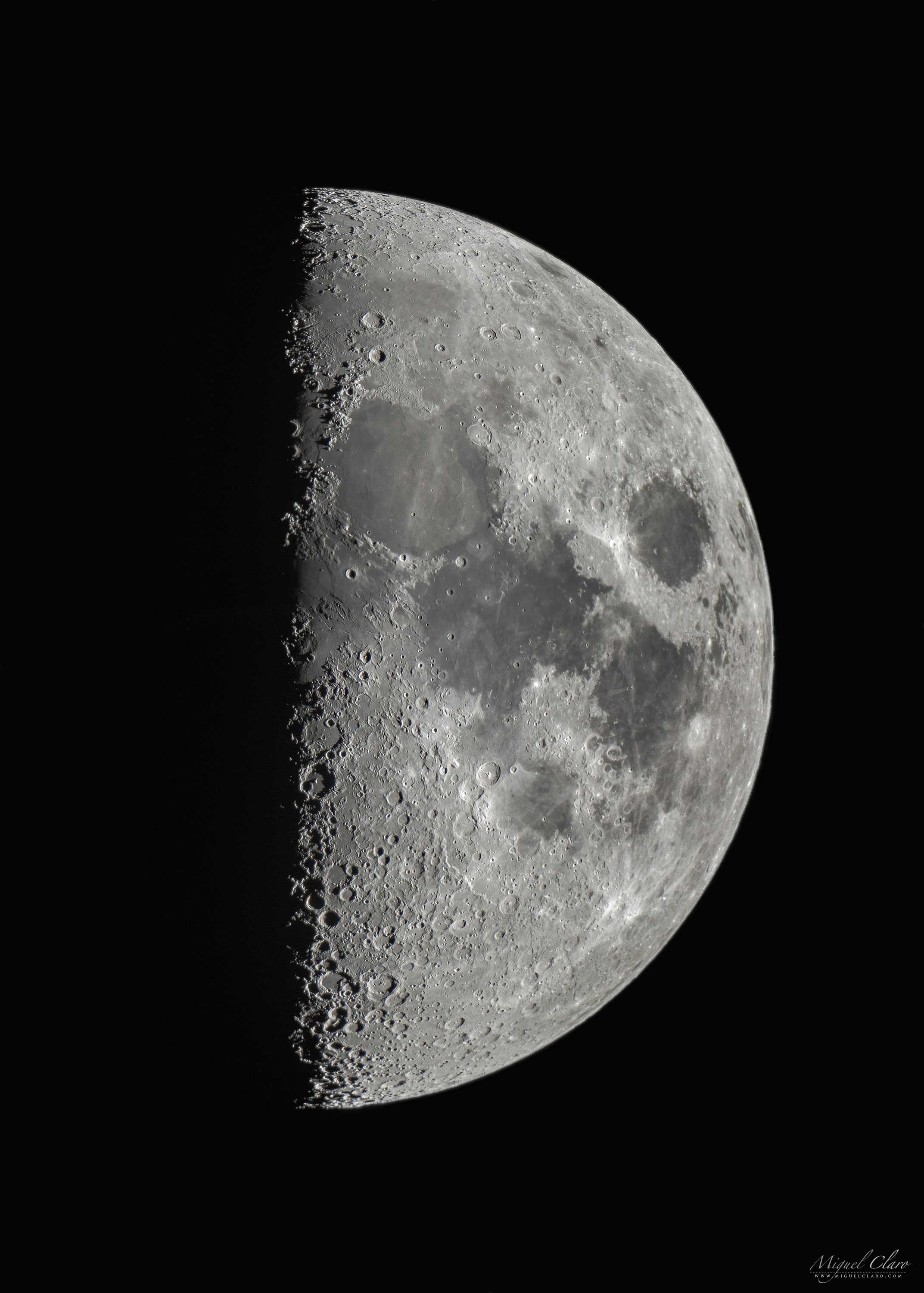See If You Can Spot the 'Lunar X' in This Close-Up View of the Moon

Miguel Claro is a professional photographer, author and science communicator based in Lisbon, Portugal, who creates spectacular images of the night sky. As a European Southern Observatory photo ambassador, a member of The World At Night and the official astrophotographer of the Dark Sky Alqueva Reserve, he specializes in astronomical "skyscapes" that connect Earth and the night sky. Join him here as he takes us through his photograph "Half of the Moon and Lunar X in a Craters Show."
Can you spot the "X" on the moon?
When the moon appears 50 percent illuminated by sunlight — a phase known as the first-quarter moon — the interplay of light and shadows provides a remarkable view of lunar craters large and small, which are easily visible in binoculars or small telescopes.
This high-resolution mosaic combines 32 photos taken through a 14-inch (36 centimeters) Celestron EdgeHD telescope with a Canon 6D DSLR camera. The images were captured from the Cumeada Observatory in Portugal on April 4, 2017. At the time, the half moon was more than 232,000 miles (373,000 kilometers) from Earth. On the boundary between the bright, cratered landscape and the dark half of the moon — or the "terminator" line — is an interesting shape known as the "Lunar X." [The Moon: 10 Surprising Facts]
See if you can spot the X. To find it, follow the terminator from the moon's southern limb (at the bottom) to about one-quarter of the way across the moon's disc.
This X may look peculiar when viewed from Earth, but it doesn't exactly "mark the spot" of any particularly interesting features on the lunar surface. Rather, it's merely an illusion created when light hits the rims of three neighboring craters (Blanchinus, La Caille and Purbach) at the right angle. The phenomenon is visible only for a few hours every lunar month just before the moon reaches its first-quarter phase.
This sharp picture can also provide a detailed view of other features, like Aristoteles, a large impact crater with a diameter of 54 miles (87 km) and a depth of 2.1 miles (3.3 km) that lies near the southern edge of Mare Frigoris, a large, dark basaltic plain to the east of the Montes Alpes mountain range.
Get the Space.com Newsletter
Breaking space news, the latest updates on rocket launches, skywatching events and more!
Another prominent crater, Posidonius — which measures 59 miles (95 km) across and 1.4 miles (2.3 km) deep — is located on the northeastern edge of Mare Serenitatis, another basaltic plain about half the size of Mare Frigoris. If you imagine all the dark features to form the shape of an upside-down rabbit, Mare Serenitatis would be the rabbit's head. Located to its north is a smaller amorphous plain known as Lacus Somniorum. [Explore the Moon (Virtually) with These Awesome Global Maps]
Posidonius was flooded with lava in the past, and that lava produced "rilles," or shallow grooves that stretch across the crater floor, according to NASA. The crater Chacornac is attached to the southeast rim of Posidonius, and to the north is the Daniell crater.
To see more of Claro's amazing astrophotography, visit his website, www.miguelclaro.com. Follow us @Spacedotcom, Facebook and Google+. Original article on Space.com.
Join our Space Forums to keep talking space on the latest missions, night sky and more! And if you have a news tip, correction or comment, let us know at: community@space.com.
Miguel Claro is a professional photographer, author and science communicator based in Lisbon, Portugal, who creates spectacular images of the night sky. As a European Southern Observatory photo ambassador, a member of The World At Night and the official astrophotographer of the Dark Sky Alqueva Reserve, he specializes in astronomical skyscapes that connect Earth and the night sky.

